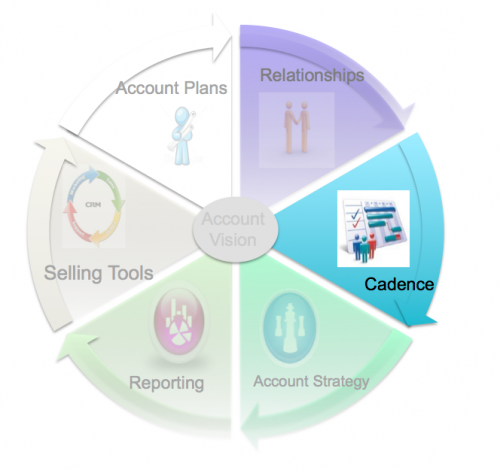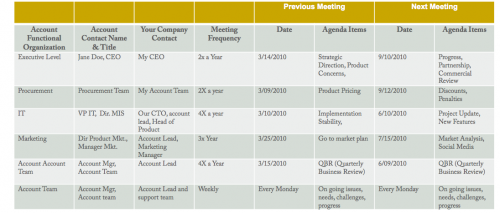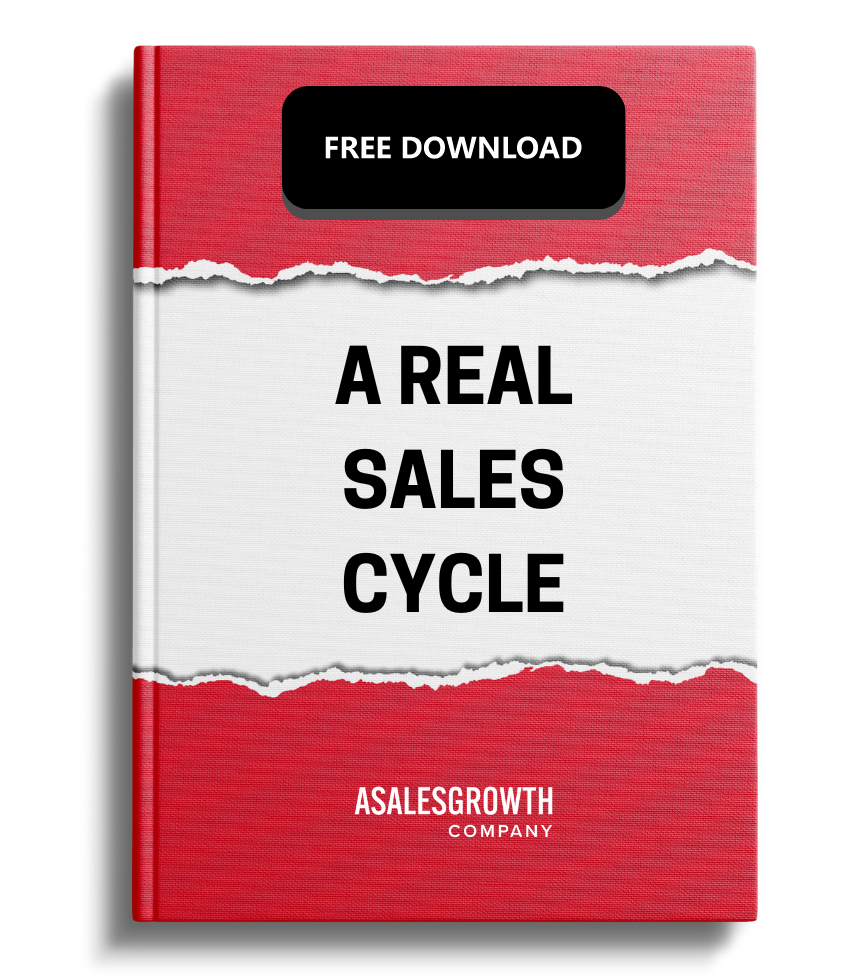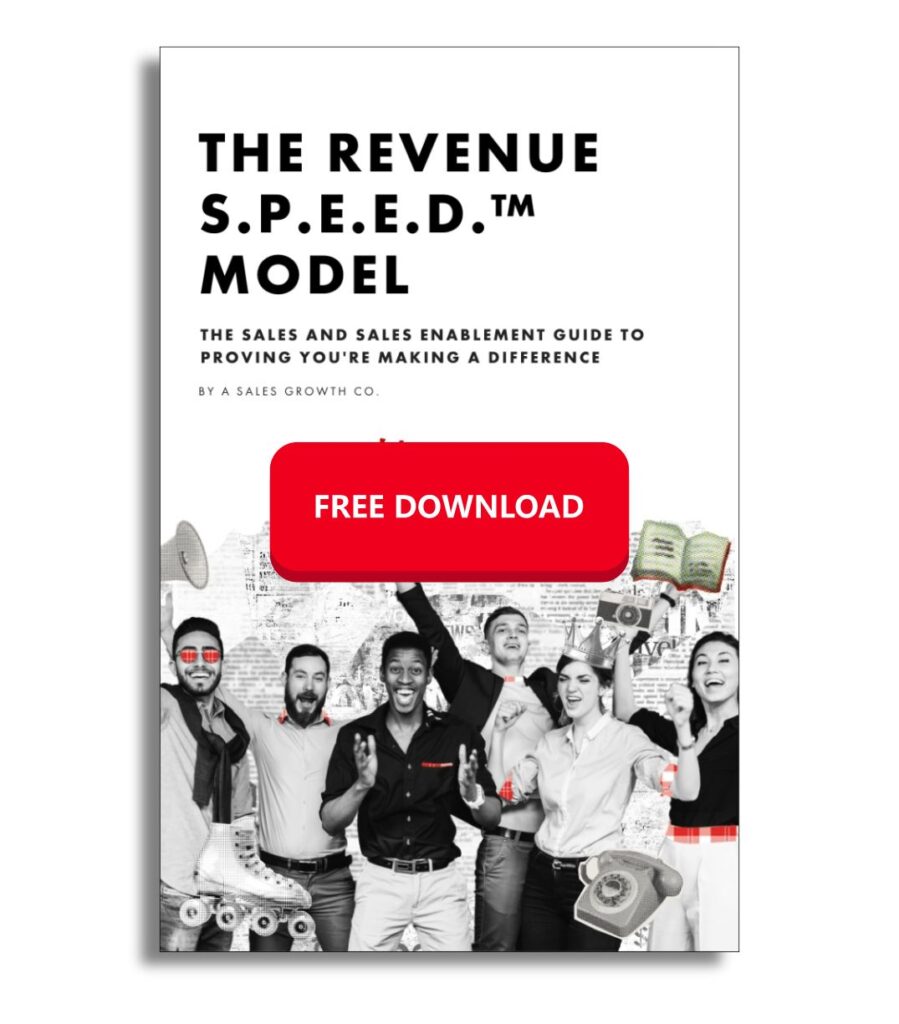Driving account success with an effective sales cadence.
You’ve heard the term sales cadence before. But, do you know how to implement a sales cadence that drives results? Many organizations tend to shy away from building proper cadences, likely because they don’t fully understand it’s value.
A well-executed sales cadence is a powerful tool for managing an account. Unfortunately, when I ask sales people about their cadence strategy or approach a get a lot of weird looks.
Cadence is how you drive an account. Cadence has the greatest impact in influencing the customer. It allows you to manage relationships, track progress, drive accountability, and engage all the stakeholders on a regular basis.

What is a sales cadence?
This is pretty straight forward – a sales cadence is the sequence of touchpoints between your company and the customer. It’s a structed and repeatable process that is followed to effectively engage each of the stakeholders in an account.
A good sales cadence consists of a few critical elements:
1) weekly progress meetings
2) quarterly business reviews
3) specific, regularly scheduled stakeholder meetings
4) clearly defined agendas and objectives
5) stakeholder commitment to participate
Cadence structure is not complex. I use this template. You’re welcome to use it as well.

(I’ve filled in the table for info purposes only, you will need to determine the appropriate cadence structure for your accounts)
The complexity and value of sales cadence comes in the execution. To build a highly effective cadence think in terms of your account vision, your account plan and the account relationships. Notice in the one above, a regular cadence has been established between the customer CEO and the Company CEO, the IT department and the company CTO, both account teams, Marketing and more. The sales cadence is specifically designed to connect many different functional groups at multiple levels in an organization. Its purposely not intended to be horizontal. Its meant to be both horizontal AND vertical.
Building an Effective Sales Cadence
When you start building a sales cadence, you must consider who needs to be regularly communicated with to ensure the success of the account. To do this, start by identifying the key stakeholders who have a significant influence on the account’s success or failure. Determining who these individuals are allows you to tailor you sales cadence plan to meet their needs and expectations. Understanding each stakeholder’s reason for involvement, the problems that they face each day, and their goals will keep these relationships strong. Ask yourself these 3 questions:
Who should be communicated with regularly?
Who influences the success or failure within the account?
How can they influence the account plan and the ability of the plan to be successful?
Sales Cadence Requirements
A successful sales cadence requires proactive planning and execution. You need to be intentional at each step of cadence development and relationship building with the key stakeholders. To do this, you must gain their support, involvement, and a commitment to engage on a regularly scheduled basis whether that’s weekly, monthly, quarterly, or semi-annually. Each of these meetings serves a specific purpose. Sitting down with these folks on a regular basis provides each side with the opportunity to monitor progress, set strategic direction, address implementation problems, and reset the direction as needed.
It’s not enough to simply schedule these meetings, each meeting must serve a purpose. Set specific agendas and actionable objectives and come away with specific items to address for both sides. These meetings need to provide valuable insight for both sides and must be worth the investment of time and resources for both parties. Without clear agendas, these meeting can quickly become ineffective and you may lose the engagement from your stakeholders.
Effectiveness of Sales Cadences
When sales cadences are executed effectively, it can have significant impacts on the management of an account. The account is being managed holistically, which means that each piece of the account is being considered, analyzed, and addressed. Relationships with the key stakeholders are being built and maintained from top to bottom – executives to those responsible for day-to-day operations. With everyone engaged, issues are identified and resolved quickly, new products, services, and offer can be introduced early with feedback provided from the customer. This positive feedback loop increases the likelihood of adoption.
Additionally, by identifying hiccups and issues early, forecasting accuracy improves and unforeseen drops in revenue or orders are minimized. Issues and challenges are addressed before they become bigger problems keeping operations smooth.
Finally, a strong cadence allows for the ability to ask for a favor which can be crucial in certain situations. If you’ve been in sales for awhile you understand the importance of being able to go to your customer and ask for help, to take a shipment early, to accelerate an order etc. When a strong cadence is in place, those important favors are much easier to ask for.
Cadence is about being proactive. It’s about managing an account from top to bottom on a regular basis. It’s about avoiding the reactionary approach most account manager find themselves in. Cadence gives the customer and you a platform to manage everything and anything associated with the account in a effective, proactive, way.
A good cadence brings to life the vision, the plan and the relationships.




0 Comments